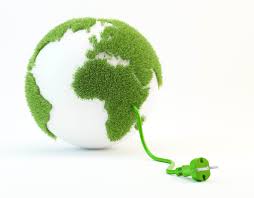Corporations around the globe purchased a record 13.4GW worth of clean power through Power Purchase Agreements (PPAs) in 2018, according to a new report published by Bloomberg New Energy Finance (BNEF), more than double the previous year’s record.
The figure for 2018 obliterates 2017’s record of 6.1GW and highlights the new normal for businesses looking to secure both clean energy but also reliable and consistently cheap energy.
Bloomberg’s data showed that the PPA’s were signed by 121 corporations in 21 different countries around the globe.
These PPAs ensure that the purchasing corporation are securing electricity generated from clean energy sources such as wind or solar either directly through “sleeved” PPAs or are matching their electricity usage with clean energy purchasing on the same grid as their operations.
Clean energy purchasing has been increasing in priority for companies around the world in recent years, but 2018’s figures highlight just how important renewable PPAs are to the corporate world, as they more than doubled clean energy purchasing in 2017.

“Corporations have signed contracts to purchase over 32GW of clean power since 2008, an amount comparable to the generation capacity of the Netherlands, with 86% of this activity coming since 2015 and more than 40% in 2018 alone,” explained Jonas Rooze, head of corporate sustainability for BNEF.
The only minor disappointment regarding the figures is that the United States accounted for over 60% of the global total in 2018 with 8.5 GW of clean energy secured through PPAs, nearly tripling the amount the country recorded in 2017.
This means that the rest of the world squeezed itself into less than 40% of the global total, highlighting US leadership that needs to be picked up by other major countries and regions.
Facebook was the leading US clean energy purchaser in 2018, signing over 2.6 GW worth of clean energy through US utilities using programs known as green tariffs – over three-times that of the United States’ next biggest corporate energy buyer, AT&T.
And while a lot of the clean energy purchased in the United States was done by experienced purchasers, the report shows the emergence of smaller, first-time corporate clean energy buyers, with 34 new companies signing their first clean energy PPAs and accounting for 31% of the total activity in the United States.
American multinational oil and gas company ExxonMobil became the first oil major to sign a clean energy PPA for its own operations when it signed a PPA for 575 MW of solar and wind in Texas – a sure sign that clean energy purchasing long ago hit the mainstream in the United States.
Despite the fact that the United States was far and away the globe’s leading clean energy purchaser, corporations in the Europe, Middle East, and Africa (EMEA) region nevertheless purchased record volumes of clean energy in 2018, signing 2.3 GW worth of PPAs and doubling the 1.1 GW signed in 2017.
The Nordic region remained the centre for activity with aluminium producers Norsk Hydro and Alcoa Corp purchasing the most clean energy in Europe throughout 2018. The region also benefited from purchasing from global tech companies such as Facebook, Amazon, and Google’s subsidiary Alphabet.
Further, countries in Europe which had seen little to no corporate procurement activity in 2017 saw activity in 2018, with companies signing PPAs in Poland for the first time, and contracts signed in Denmark and Finland for only the second time. New deals were also signed in the United Kingdom.
Though deemed to be a nascent market for clean energy procurement, the Asia Pacific (APAC) region nevertheless still signed a record 2 GW worth of clean energy PPAs in 2018, more than the previous two years combined and occurring almost entirely in India and Australia, which boasted 1.3GW and 700MW respectively.
Leadership from these two countries is due primarily to the fact that both countries allow corporations to buy large-scale clean energy through offsite PPAs, making them a rarity in APAC.
Unfortunately, demand exceeds supply throughout the rest of APAC, although Bloomberg highlighted recent changes in several markets which suggests increased activity could be coming down the pipeline soon.
For example, offsite corporate PPA mechanisms are now available in nine Chinese provinces, and the expected introduction of a renewable energy portfolio standard in the country should provide over 30,000 large commercial and industrial companies renewable electricity targets.
Meanwhile, across the sea in Japan, the country’s third non-fossil certificate auction saw corporations purchase 21 TWh, tripling the combined activity of the first two auctions. In addition, thirteen companies in Japan have also established 100 renewable electricity targets, more than the rest of APAC combined.
This last is representative of a larger trend ongoing around the world of corporations signing up to implement 100% renewable electricity targets, and most often aligning themselves with the RE100 initiative run by The Climate Group in partnership with CDP.
As of writing, the initiative boasts 161 companies that have signed up with their own 100% targets.
If these companies are to meet their own targets, Bloomberg New Energy Finance believes they will need to purchase an additional 191 TWh of clean electricity by 2030 which, if met through offsite solar and wind PPAs, could see the addition of an estimated 102 GW worth of new solar and wind capacity globally.
Projected renewables shortfall for RE100 companies

“For companies that think seriously about sustainable growth, establishing clean energy and decarbonization targets lines up naturally with overall corporate strategies,” said Bloomberg’s Jonas Rooze. “At the same time, these initiatives have created an entire new universe of opportunity for utilities, clean energy developers and investors.”










